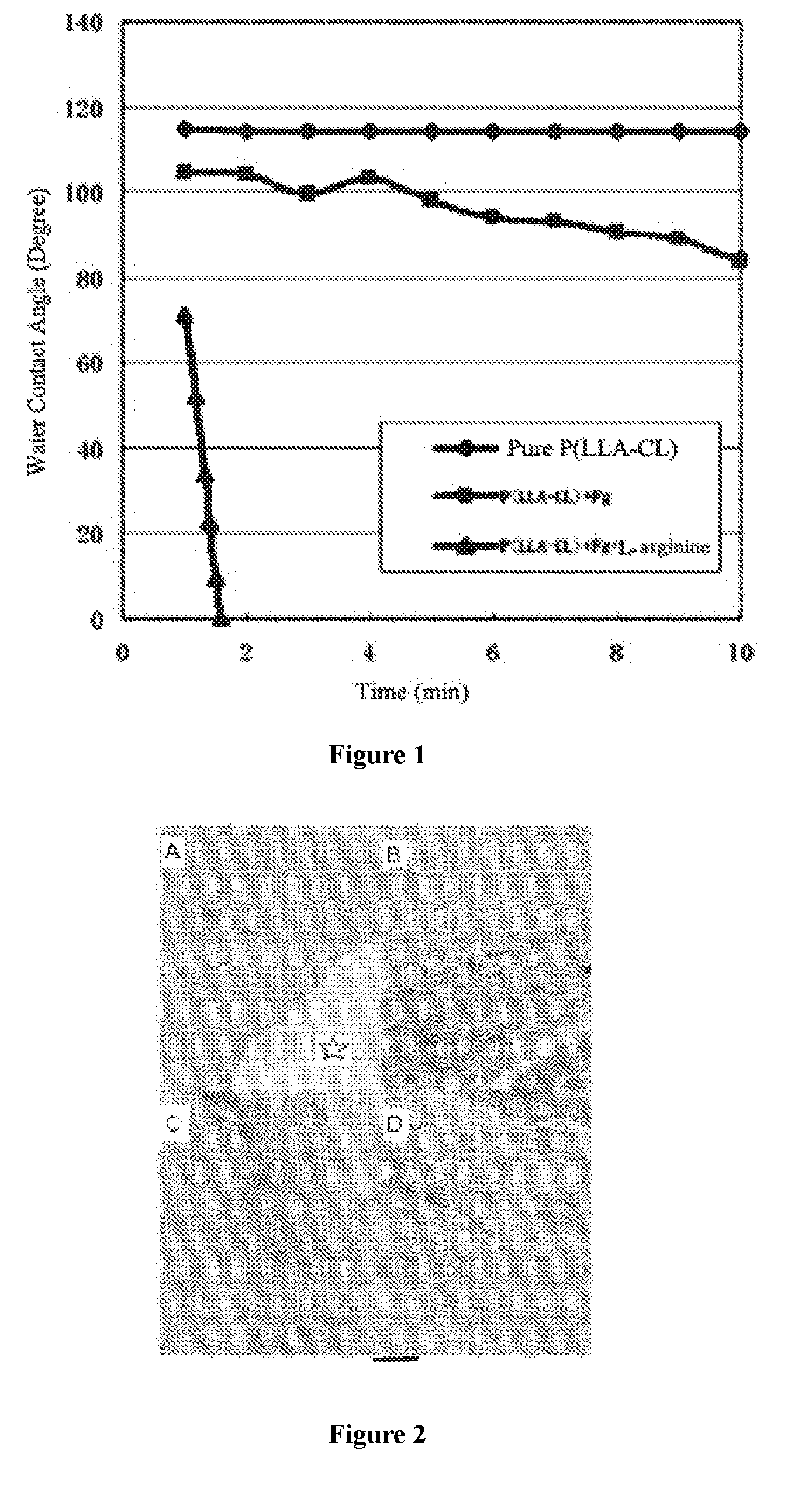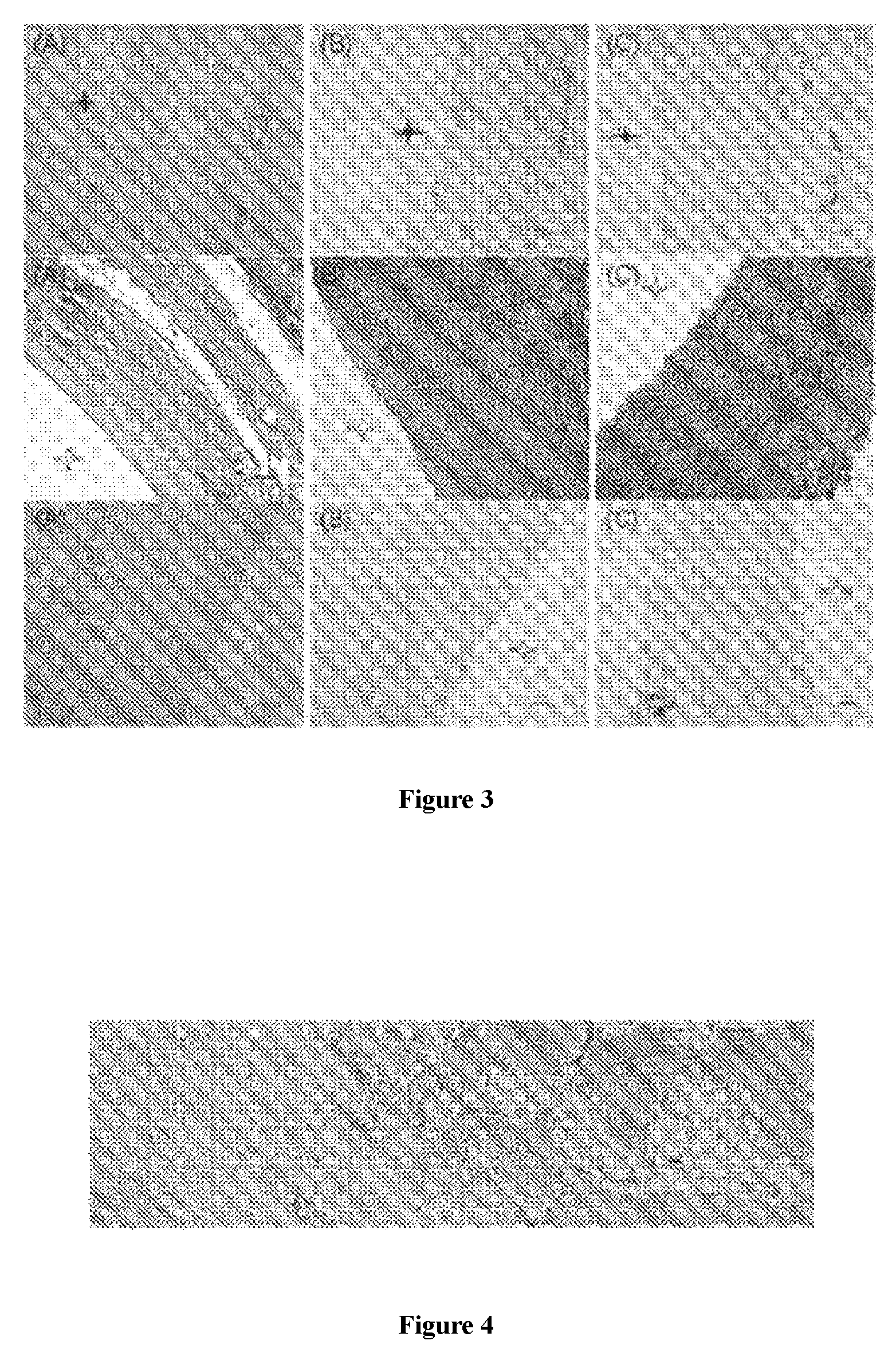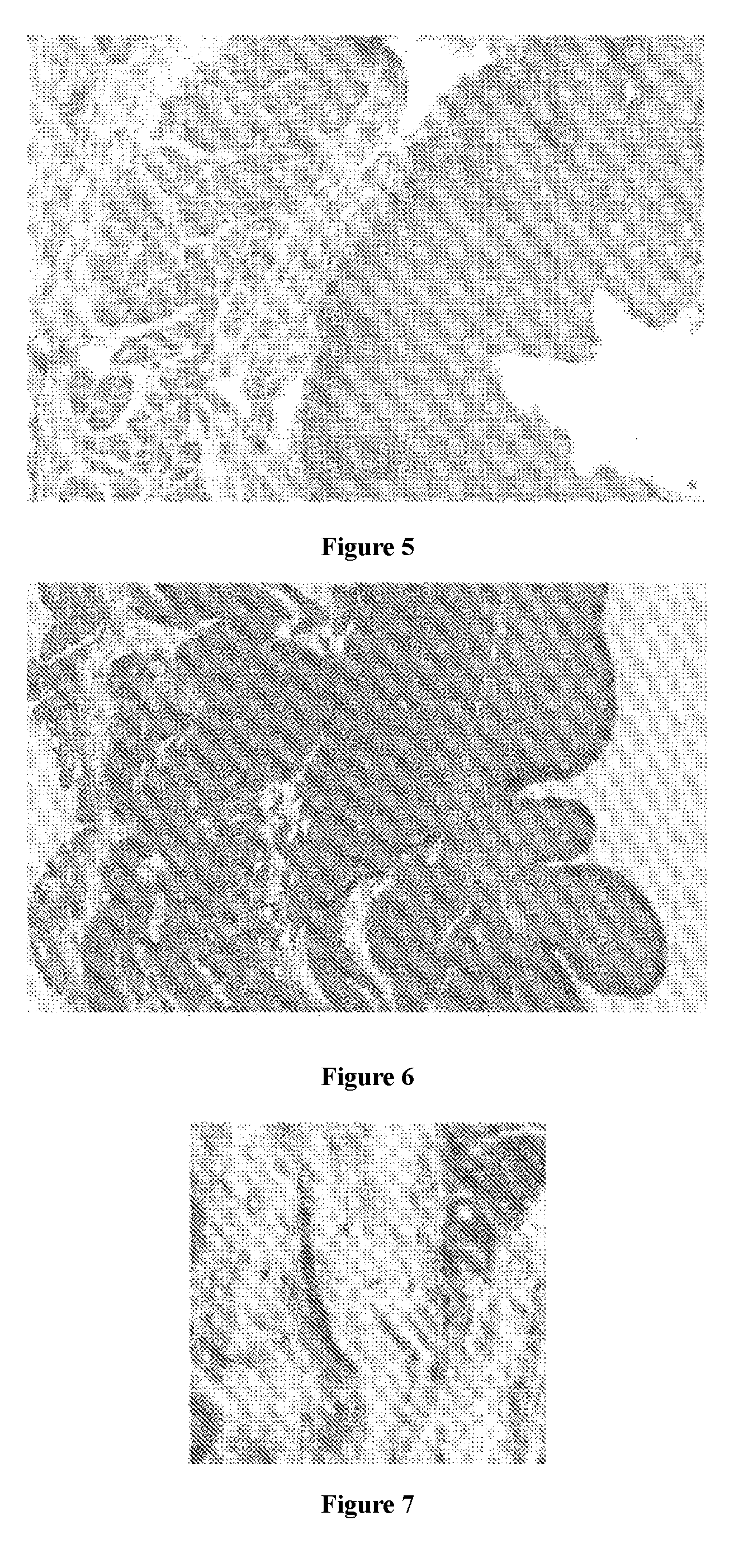Hydrophilic electrospinning biological composite stent material used for tissue regeneration and preparation method and application thereof
- Summary
- Abstract
- Description
- Claims
- Application Information
AI Technical Summary
Benefits of technology
Problems solved by technology
Method used
Image
Examples
example 1
[0050]The samples in this example were divided into 3 groups:
[0051](1) pure P(LLA-CL) group: 6 g P(LLA-CL) was dissolved in 100 ml hexafluoroisopropanol;
[0052](2) P(LLA-CL)+Fg group: Fg was dissolved in 20 ml saline to obtain solution 1; 6 g P(LLA-CL) was dissolved in 80 ml hexafluoroisopropanol to obtain solution 2; the solutions 1 and 2 were blended, such that there were 4g Fg and 6g P(LLA-CL) contained in 100 ml blend solution; and
[0053](3) P(LLA-CL)+Fg+protective agent group: Fg and L-arginine hydrochloride were dissolved in 20 ml saline to obtain solution 1; P(LLA-CL) was dissolved in 80 ml hexafluoroisopropanol to obtain solution 2; the solutions 1 and 2 were blended; such that there were 4 g Fg, 1 g L-arginine hydrochloride and 6 g P(LLA-CL) contained in 100 ml blend solution. The biological composite stent material was preapared by electrospinning. The parameters for an electrospinning machine were set as follows: electrospinning distance of 15 cm; electrospinning voltage of...
example 2
[0056]Bovine blood-derived Fg with different weights and 1 g L-arginine hydrochloride were dissolved in 20 ml saline to obtain solution 1, and the ratio of Fg / L-arginine hydrochloride of the solution is shown in Table 1; 6 g P(LLA-CL) was dissolved in 80 ml hexafluoroisopropanol to obtain solution 2; the solutions 1 and 2 were blended, and were divided into a total of 13 groups. An electrospinning machine from KATO TECH company (Japan) was used to prepare electrospinning membranes respectively. The parameters for the electrospinning machine were set as follows: electrospinning distance of 15 cm; electrospinning voltage of 15 KV; solution flow rate of 2 ml / h; and transverse speed of injection syringe of 10 cm / min. The thickness of the electrospinning membrane was about 200 μm.
[0057]The equilibrium contact angle of the electrospinning membranes of each group was measured by using an OCA20 optical contact angle measuring device (Germany). Results were shown in Table 1.
TABLE 1Dose-effec...
example 3
[0059]4 g Fg and 1 g L-arginine hydrochloride were dissolved in 20 ml saline to obtain solution 1; 6 g P(LLA-CL) was dissolved in 80 ml hexafluoroisopropanol to obtain solution 2; the solutions 1 and 2 were blended such that there were 4 g Fg, 1 g L-arginine hydrochloride and 6 g P(LLA-CL) contained in 100 ml blend solution; and the biological composite stent material was prepared by electrospinning. The parameters for an electrospinning machine were set as follows: electrospinning distance of 15 cm; electrospinning voltage of 15 KV; solution flow rate of 2 ml / h; and transverse speed of injection syringe of 10 cm / min. The thickness of the electrospinning membrane was 200-400 μm.
[0060]As a biological composite stent material, the prepared electrospinning membranes had a thickness of 200-400 μm, a water contact angle of less than 5° and a mechanical strength of 15-20 MPa. After sterilization using 25 KGy electron beam, the obtained material was used as swine abdominal defect patches.
[...
PUM
| Property | Measurement | Unit |
|---|---|---|
| Length | aaaaa | aaaaa |
| Length | aaaaa | aaaaa |
| Length | aaaaa | aaaaa |
Abstract
Description
Claims
Application Information
 Login to View More
Login to View More - R&D
- Intellectual Property
- Life Sciences
- Materials
- Tech Scout
- Unparalleled Data Quality
- Higher Quality Content
- 60% Fewer Hallucinations
Browse by: Latest US Patents, China's latest patents, Technical Efficacy Thesaurus, Application Domain, Technology Topic, Popular Technical Reports.
© 2025 PatSnap. All rights reserved.Legal|Privacy policy|Modern Slavery Act Transparency Statement|Sitemap|About US| Contact US: help@patsnap.com



